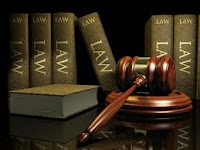Rights to Intellectual property (IPRs) is a juridical concept of some exclusive rights which guaranteed under intellectual property law. The owners of the Rights to Intellectual property (IPRs) are exclusively given a right to a variety of tangible assets including works in musical, literary, and artistic works; discoveries and inventions; and words, phrases, symbols, and designs.
 The Rights to Intellectual property commonly divided in some types as follow: copyright, trademarks, patents, industrial design rights and in some jurisdictions trade secrets. According to Trade Organization (WTO) the Rights to Intellectual property is classified mainly in two types, they are; Copyright and rights related to copyright and Industrial property. The detail article of the rights will be discussed separately on different pages of this site.
The Rights to Intellectual property commonly divided in some types as follow: copyright, trademarks, patents, industrial design rights and in some jurisdictions trade secrets. According to Trade Organization (WTO) the Rights to Intellectual property is classified mainly in two types, they are; Copyright and rights related to copyright and Industrial property. The detail article of the rights will be discussed separately on different pages of this site.Historically Modern usage of the term of Rights to intellectual property goes back at least as far as 1867 with the founding of the North German Confederation whose constitution granted legislative power over the protection of intellectual property (Schutz des geistigen Eigentums) to the confederation. When the administrative secretariats established by the Paris Convention (1883) and the Berne Convention (1886) merged in 1893, they located in Berne, and also adopted the term intellectual property in their new combined title, the United International Bureaux for the Protection of the Rights Intellectual Property. The organization subsequently relocated to Geneva in 1960, and was succeeded in 1967 with the establishment of the World Intellectual Property Organization (WIPO) by treaty as an agency of the United Nations.
Nowadays the term of the rights to intellectual property or intellectual property right legally used referring to the above rights. Although many of the legal principles governing the rights to intellectual property have evolved over centuries, it was not until the 19th century that the term rights to intellectual property began to be used, and not until the late 20th century that it became commonplace in the majority of the world. Currently the rights to intellectual property officially known as Intellectual Property Rights.
The legal protection of Rights to Intellectual Property is based on the Article 27 of the Universal Declaration of Human Rights, which is stated that "everyone has the rights to the protection of the moral and material interests resulting from any scientific, literary or artistic production of which he is the author". In term of moral consideration, the protection of the rights to intellectual property can be argued according to the following reasons:
- Natural Rights/Justice Argument: this argument is based on Locke’s idea that a person has a natural right over the labour and/or products which is produced by his/her body. Appropriating these products is viewed as unjust. Although Locke had never explicitly stated that natural rights to intellectual property applied to products of the mind.
- Utilitarian-Pragmatic Argument: according to this rationale, a society that protects private rights to intellectual property is more effective and prosperous than societies that do not. Innovation and invention in 19th century America has been said to be attributed to the development of the patent system. By providing innovators with "durable and tangible return on their investment of time, labor, and other resources", rights to intellectual property seek to maximize social utility.
- "Personality" Argument: this argument is based on a quote from Hegel: "Every man has the right to turn his will upon a thing or make the thing an object of his will, that is to say, to set aside the mere thing and recreate it as his own"
The aims of the enforcement of the Rights to Intellectual Property or Intellectual Property Rights Law (IPRs) is set differently in different countries. In European Union countries for example, the enforcement is established with the following objectives:
- promoting innovation and business competitiveness. If counterfeiting and piracy are not punished effectively, they can lead to a loss of confidence in the internal market.
- safeguarding employment in Europe. In social terms, the damage suffered by businesses as a result of counterfeiting and piracy is reflected ultimately in the number of jobs they offer;
- preventing tax losses and destabilization of the markets. The tax losses caused by counterfeiting and piracy are significant.
- ensuring consumer protection. Counterfeiting and piracy are generally accompanied by deliberate cheating of consumers as to the quality they are entitled to expect from a product bearing, for instance, a famous brand name.
- ensuring the maintenance of public order. Counterfeiting and piracy infringe labour legislation (clandestine labour), tax legislation (loss of government revenue), health legislation and legislation on product safety.
Even though the Rights to Intellectual Property are given exclusively and protected legally, it should also be noted that the exclusive rights given are generally subject to a number of limitations and exceptions, aimed at fine-tuning the balance that has to be found between the legitimate interests of right holders and of users. Please find the related articles to Rights to Intellectual Property on this site.
References: Wikipedia Intellectual Property, European Legislation, World Trade Organization.
References: Wikipedia Intellectual Property, European Legislation, World Trade Organization.
